How to Create Effective Get in Touch Forms for Your WordPress Website

Doesn’t your business need visitors’ contact info to get in touch later? A get-in-touch form can be a good start as a primary token of customer relationship.
To turn your website’s visitors from one-time visitors to regular users, a get in touch form will work like a strong bridge.
Let’s dive into this blog and find out the simple steps to create effective get in touch WordPress forms for your website.
What is a get-in-touch form
A get-in-touch form is a kind of contact form that cordially invites website visitors to further communication.
A get in touch form is a form to collect users’ contact information as well as messages, and build a way so that the brand can directly communicate with the users when they want to.
You can name it a contact form, too, as it works much like a contact form – getting leads and connecting to users.
It’s sometimes even more actionable than a simple contact form. A contact form generally tones like connecting in case the users have a specific need, whereas ‘Get in touch’ defines that you can communicate with a brand even if it’s much casual.
Users can provide feedback or ask questions, or simply ask for communication from the site’s end.
Why do you need a get in touch with us form
Without a ‘get in touch form’, your site is a one-sided communication channel which works like a radio– you can convey your messages, but cannot hear back from your audience.
So, a ‘get in touch with us’ form can allow your users to send messages and information, or any kind of query, and continue the communication for further relationship.
A ‘get in touch’ or ‘reach out to us’ form has several reasons to be attached to the homepage or other crucial pages. Here are some reasons why a get in touch form as a point of contact has been so popular for:
Collecting leads
Thousands of visitors may visit your website, many of whom, many want to communicate with you. A ‘get in touch’ form is a box that collects users’ emails, addresses, and sometimes phone numbers as well. If you are selling a service or product, you can easily increase the number of customers using those leads.
Getting visitors’ messages
Through a get in touch form, a new visitor can directly message you without opening their email or copying your email address. Neither do they need to put a subject, nor elaborate on the gist. A short message is enough to express their needs– visitors like this.
Summarizing useful information
A get in touch form might collect one message from one submission, but if you think about the total number, it’s much bigger. Let’s say one feature of any product seems to be great, users are more interested in this, and want to know more. After knowing about that from a good number of visitors, you might like to add a new page describing this feature.
Steps to create a get in touch form on WordPress
Here, you can explore the step-by-step guide to creating a get in touch form for a WordPress site. Using Fluent Forms, the fastest WordPress form builder plugin, you can make a customized contact form or a get in touch form with zero coding knowledge.
While entering to Fluent Forms Dashboard, you will get the options for creating a new form using a blank form, template, or AI.
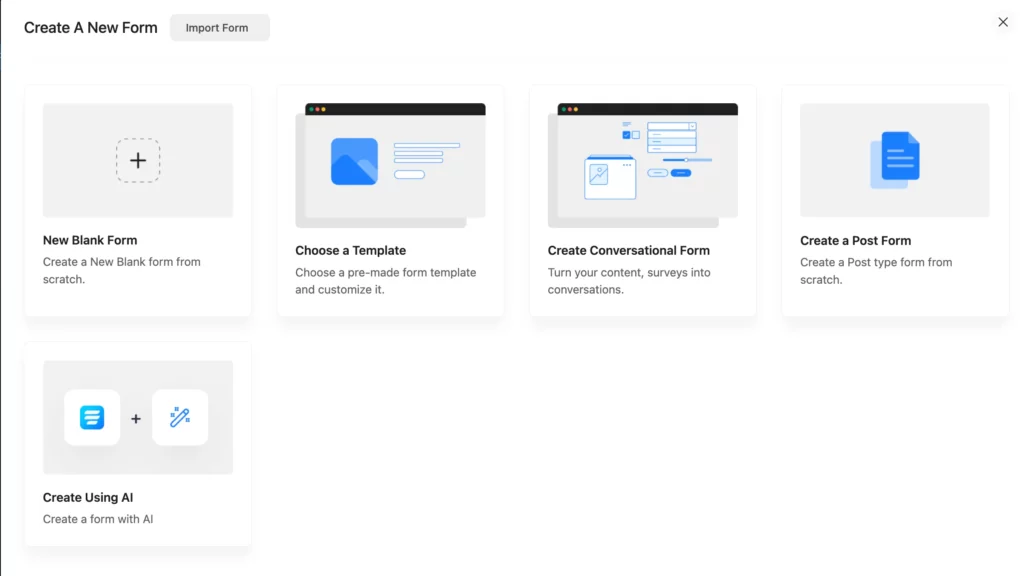
- Creating using a contact us form template
As get in touch form is another name for a contact form, you can use a basic contact us form template to build a proper form for your user-brand communication purpose.

A new form page will appear after clicking on the preferred template. You can delete the existing fields, add new input fields, and customize the input fields according to your preference. So, a basic contact us form template can be transformed into an advanced get in touch form with a few clicks.
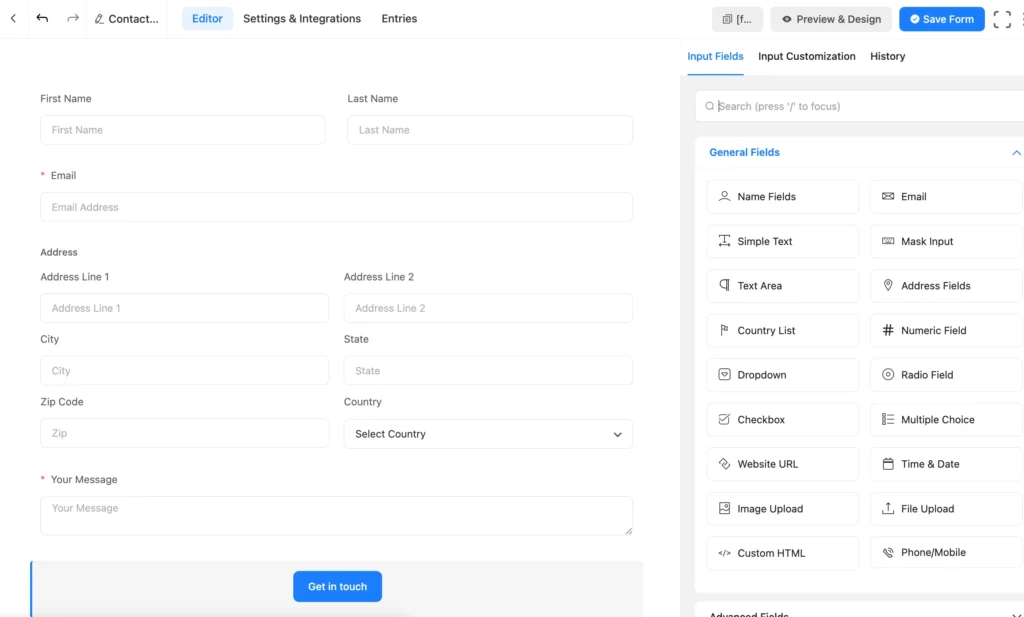
Here, you can see I’ve added the address field from the Input Fields and have customized the Submit Form button text, which is now ‘Get in touch’, displayed at the center.
By using Fluent Forms, you can allow the form submitters to access Address Autocomplete. You can display Google Maps and provide address suggestions to make the form submission faster. Make sure you have put the Google Maps API key and enabled autocomplete.
Here, I have shown two fields that have been customized just by changing the Element Label and Placeholder of the ‘Your Message’ using the Input Customization option, and the button text ‘Submit Form’ has been changed to ‘Get in touch’.
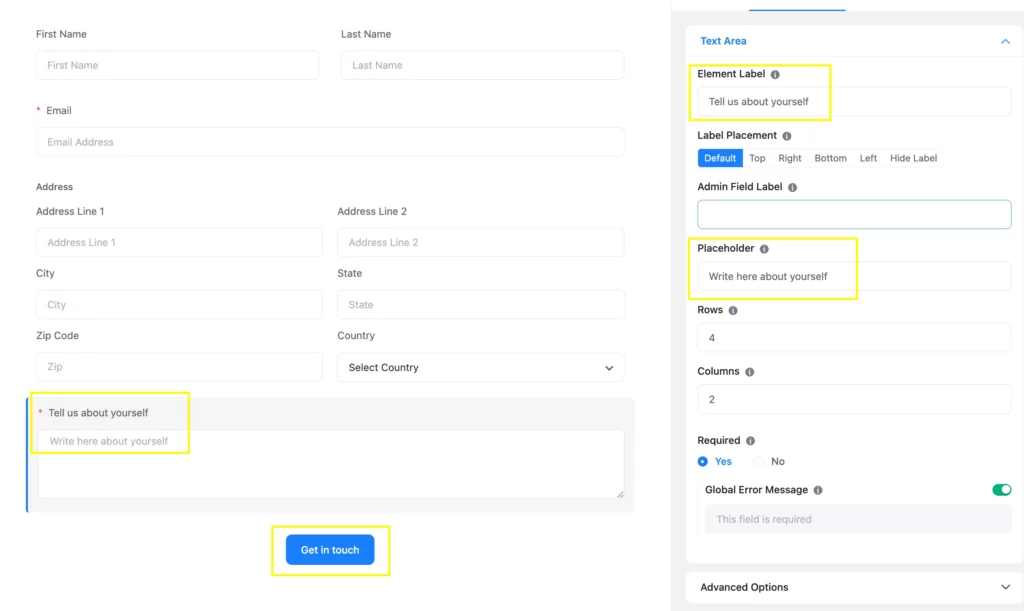
- Creating using the AI form builder
Let’s get back to the Create a New Button page to understand the use of the AI form builder, a built-in feature of Fluent Forms. This time, you need to select the Create Using AI option to proceed with making a get in touch form using AI.
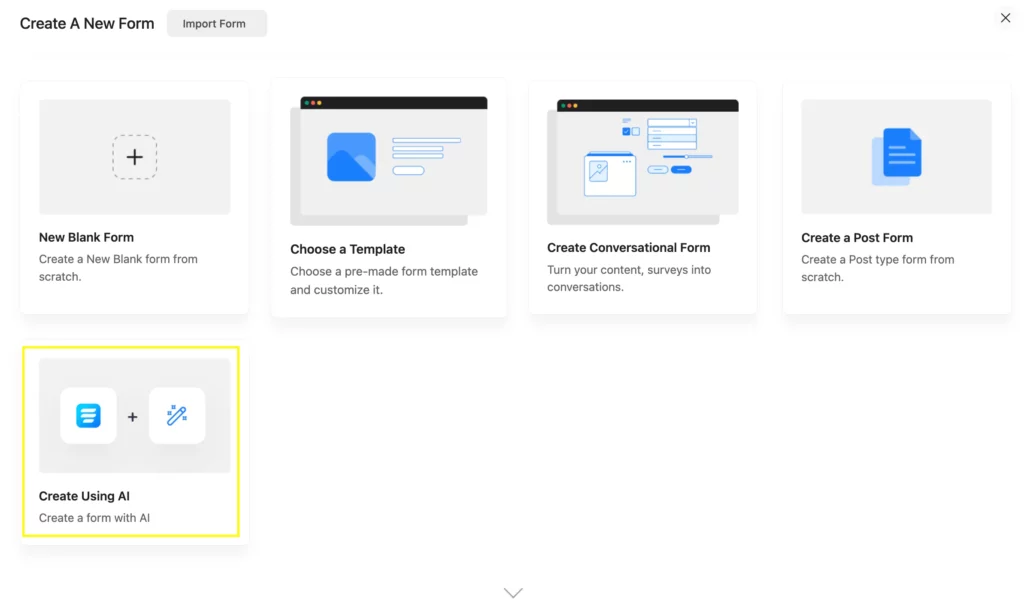
All you need is to take one option from the Suggestions, or put your prompt inside the box under the text Create a form for.
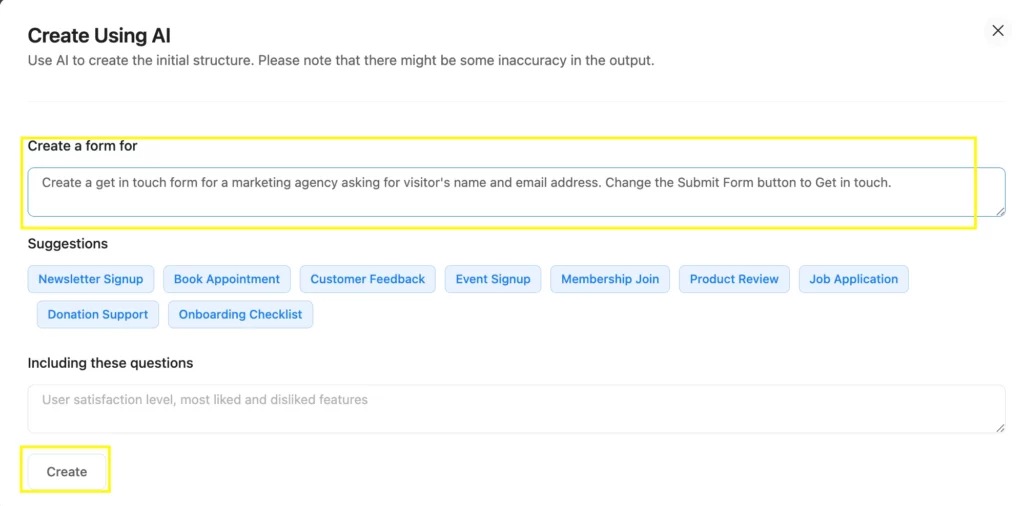
Fluent Forms AI form builder will cost you no more than a few seconds to make a new form following your command.
Like the form template, an AI form is also customizable in Fluent Forms. Let’s check how Fluent Forms responds to a short prompt.
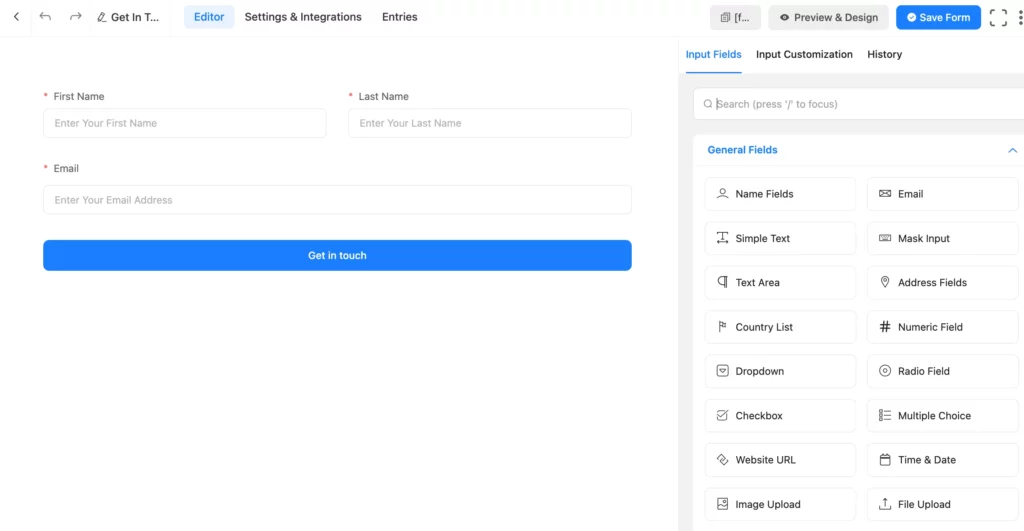
- Creating a new blank form
Creating a new blank form using Fluent Forms, you will get full creative control while making a form. You can add and customize any field, any text, and make it visually display according to your wish. Again, it’s nothing hard compared to a template or AI form because Fluent Forms is a drag-and-drop WordPress form builder plugin.
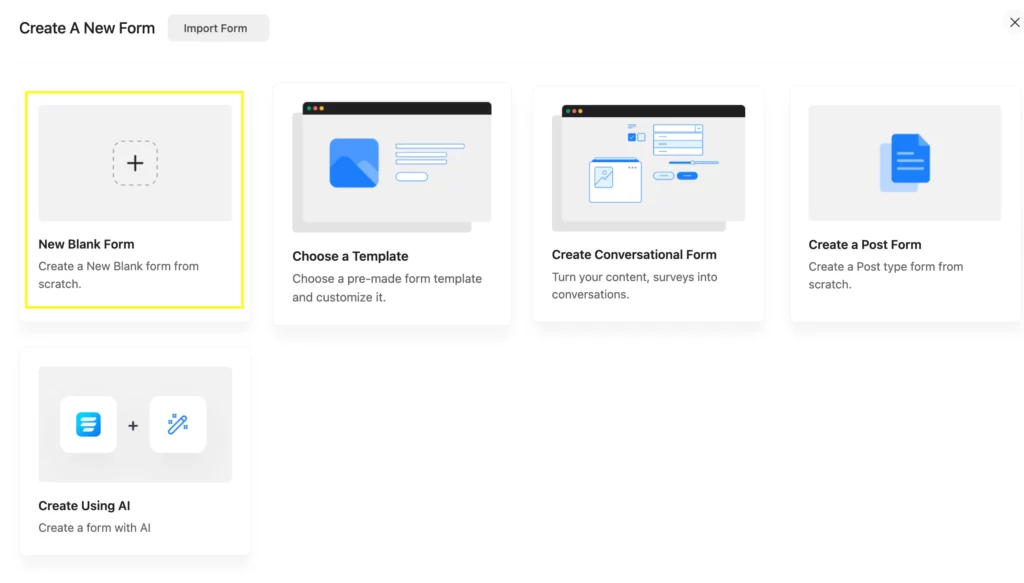
You can easily customize the input fields, and can use advanced fields if you are a user of Fluent Forms Pro Version, or convert your Free subscription to Pro.
Like the example below, you can use more engaging advanced fields and features, such as reCAPTCHA, rich text using Fluent Forms Pro for your WordPress site.
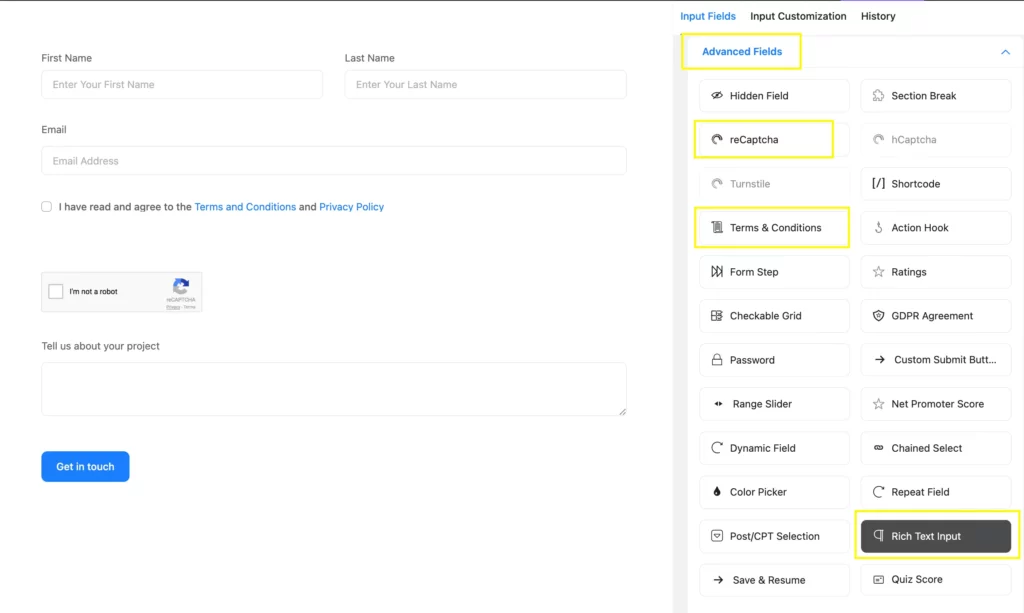
Let’s see how a get in touch form using Fluent Forms will appear to the users.
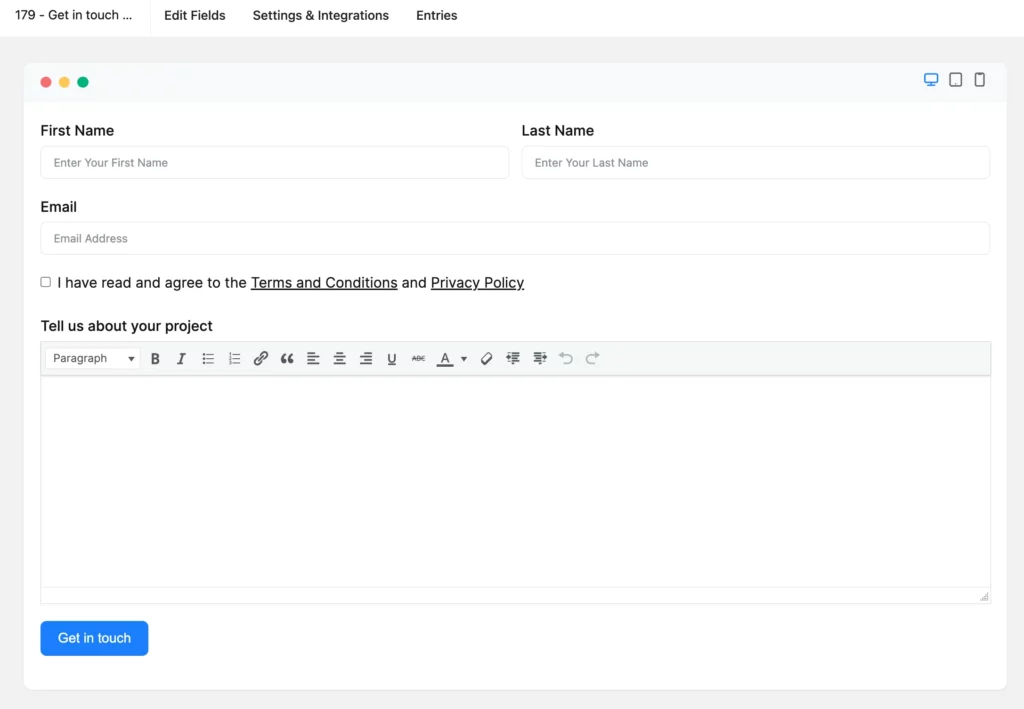
Don’t forget to save the form, and show a thank you or confirmation message to your visitors that you will get in touch with them soon. It’s quite simple to show a confirmation message using Fluent Forms.
Simply go to Settings and Integrations and then click on Confirmation Settings, customize the Message to show if you need. You can add media or shortcodes, and alter the Confirmation Type. And, for better data security, you can enable Double Optin Confirmation.
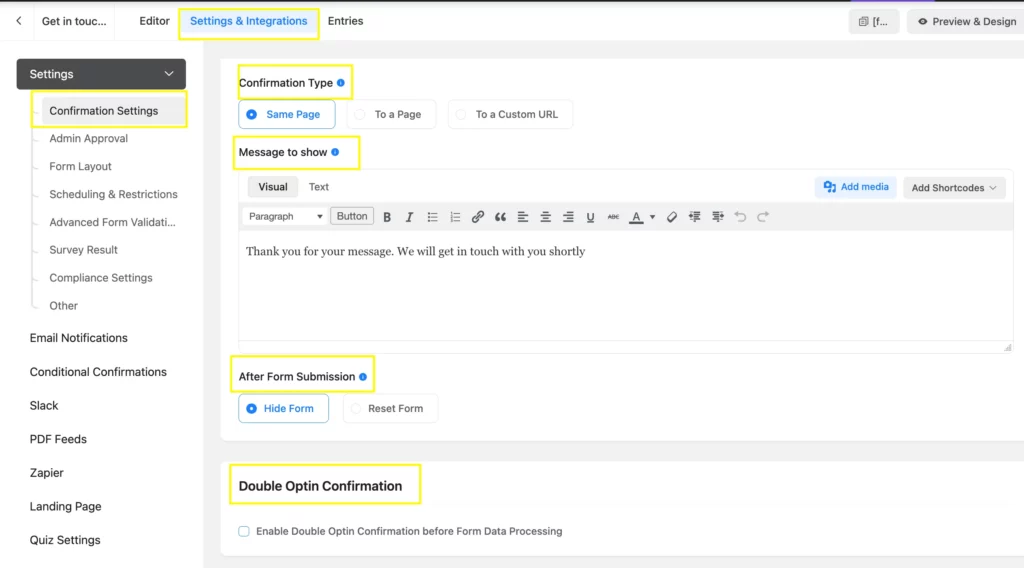
Best practices for get-in-touch forms
Not every get-in-touch-with-us will work effectively until and unless a few steps are taken. This easy-to-fill contact form should work like a hook for the new visitors. A get-in-touch form is a silent representative of your contact channels; one form submission brings a visitor closer to your brand.
Keep it visible
Where should you attach the getting in touch form? It might be the home page, successful landing pages, or some pop-ups. Wherever you keep it, it should be noticeable and adequately highlighted.
Keep it short
Here, being short is not equal to being less. It’s about being more precious. Ask for only the information you need, and keep the alternatives omitted or optional. If you are asking for an email address, avoid asking for the mobile number unless it’s more relevant and has particular reasons.
Ensure clarity
Explain in short why you need the contact information of the users, if possible. Is it to send them an offer or newsletters? Or to reach out to them back with a clear notification? Or is it just a procedure? Whatever the reason is, make it clear.
Add visual icons
Visual icons have more impact on a page full of text and pictures. Netizens are quite used to filling out contact forms, so your forms too should be skimmable using the icons.
Add a lead magnet
A lead magnet pushes the users to decide instantly to enter the contact list. If you are offering a free newsletter, course, free trial consultation, offer, or discounts, attach it to the form to help your users find it more reasonable to share contact info.
Reassure users
More often, we see a thank you message appear after completing a contact us form. Basically, it’s a reassurance form confirming to the users that the form has been submitted successfully, and you will soon connect to that user.
Prevent spam
That might be the prime reason why sometimes contact forms become less prioritized. Spammy messages don’t make any sense. So, add a reCAPTCHA button to the form and restrict spam messages and contact info.
Related features
Conversational forms
To engage your website’s visitors with stylish forms, Fluent Forms offers the conversational forms feature for custom styling and enables better navigation with one question at a time. The users will find multiple share options and multiple layouts. It makes the user get a chat-like experience.
Form security
Fluent Forms comes with features and integrations such as GDPR compliance, hCAPTCHA, reCAPTCHA, Akismet, and Turnstile, which provide the users with an ecosystem that altogether ensures ultimate form security and prevents spam at its level best.
User-generated content
Fluent Forms offers you and your website’s visitors much more than forms with its Advanced Post Creation feature. Users can post to your site with an uploading and updating facility. Users can now easily join your content creation space without any hassle.


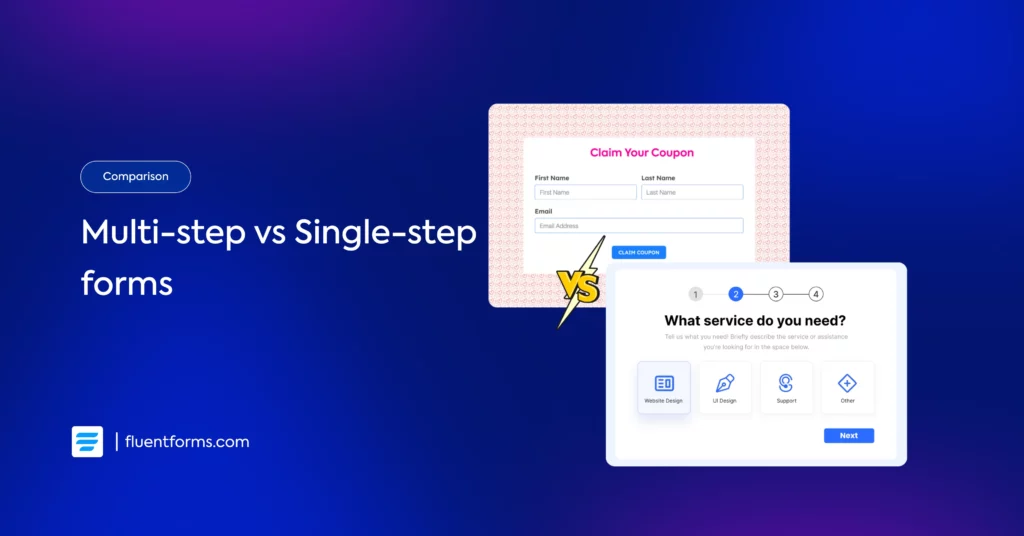
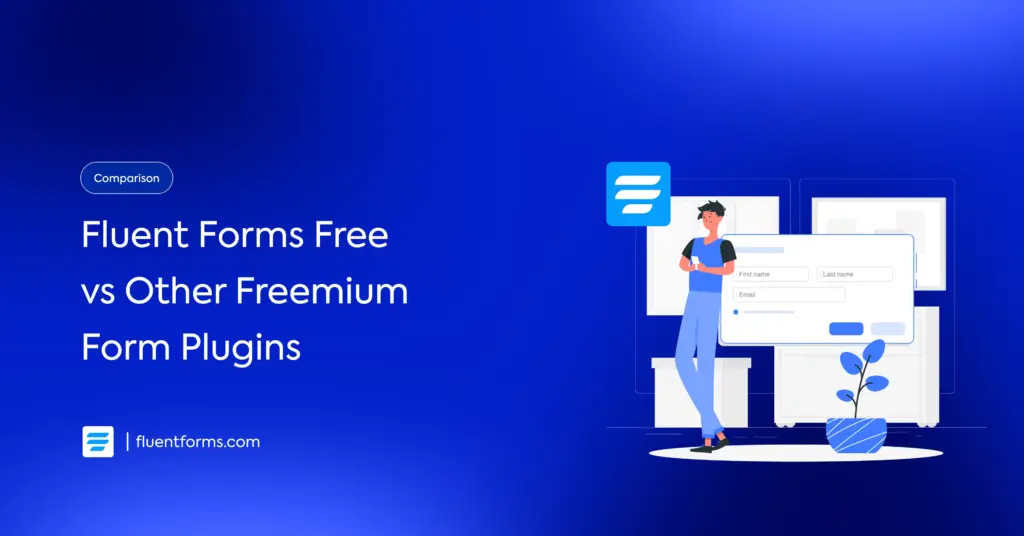




Leave a Reply